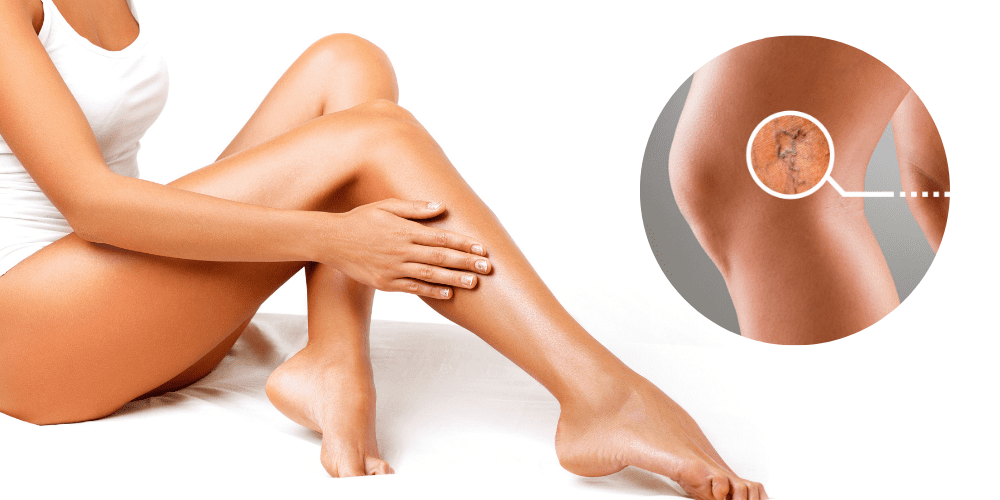Varicose veins can be uncomfortable, unsightly or both. Skin Institute’s new walk-in, walk-out treatment has a leg up on its often painful and time-consuming predecessors.
Understanding our veins
Veins return blood to the heart. In the legs there are two systems, the deep veins that carry 90 per cent of the blood back to the heart, and the superficial system, which can be seen as an accessory system.
One-way valves in the veins keep blood flowing from the legs back to the heart against gravity.
What are varicose veins?
Varicose veins are caused when the valves in the superficial veins fail. Blood then travels back down these veins and into their branches, where it pools.
The pooling blood causes the veins to distend, swell and stretch, causing further valve failure in the veins below.
This can result in the progression to visible and palpable varicose veins, appearing beneath the skin as bluish-green lines, sometimes visibly raised, twisted or even bulging at times.
It’s important to note that varicose veins that are not visible can still cause significant symptoms.
What are the symptoms of varicose veins?
Varicose veins are not a cosmetic problem. When the veins are stretched they can become leaky, and the fluid that leaks into the surrounding tissue can cause discomfort, swelling and irritation of the skin.
If left untreated, some varicose veins can result in skin damage, poor healing and ulcers. Some symptoms include:
• Discomfort and pain (usually worse as the day progresses and into the evening)
• Itchiness associated with dry skin
• A burning sensation
• Restless legs at night
• Cramping of the calves or feet
• Swelling of the ankles
• Changes in skin quality
• Brown-black skin discolouration
• Varicose eczema around the ankles and ulceration
Treatment options
Recent years have seen a major evolution in the treatment of varicose veins, with surgical stripping no longer recommended.
Today, international guidelines for the treatment of varicose veins recommend the non-surgical techniques of Radio Frequency Ablation (RFA) or Endovenous Laser Ablation (EVLA), and/or Ultrasound Guided Sclerotherapy (UGS).
These modern, walk-in, walk-out procedures are done under local anaesthetic, are well proven and have excellent outcomes, without the inherent risks of a general anaesthetic. If you’ve been experiencing itchy, cramping or aching legs, consider that it could be your veins.
Remember, the symptoms aren’t always visible, but if left untreated, varicose veins usually deteriorate. Colder months are the best time to treat your veins as you will need to wear compression stockings post-treatment.
Come and see the team at Skin Institute. With no GP referral necessary, one of our highly experienced team will conduct an initial consultation including an ultrasound map of your veins to determine if treatment is required, and what would be the best procedure for your condition. Treatment of varicose veins causing symptoms are covered by most insurance companies.
Book a free veins assessment with Skin Institute today.
Call 0800 SKIN DR (754 637) or visit www.skininstitute.co.nz




